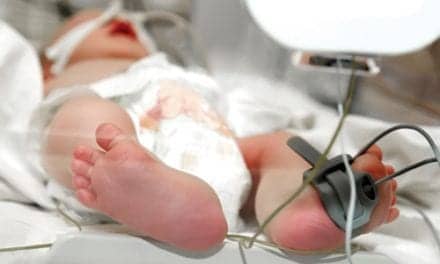The US Food and Drug Administration (FDA) has granted 510(k) clearance to Masimo’s Radius VSM, a patient-worn, continuous multi-parameter vital signs monitor.
Designed on a modular platform, Radius VSM allows clinicians to monitor a variety of physiological measurements, including Masimo SET pulse oximetry, noninvasive blood pressure, temperature, respiration rate, and electrocardiography (ECG).
According to a release from the company, the device combines the reliability and accuracy of larger bedside monitors with the comfort and freedom of a wearable device, allowing ambulation and movement while ensuring patients remain continuously monitored. Radius VSM also can be scaled to match each patient’s monitoring needs and level of acuity and to accommodate surges in patient volume.
“Radius VSM’s unique scalability, versatility, advanced connectivity, and broad range of accurate and automated continuous measurements—all in a wearable device that can be quickly and easily deployed anywhere in the hospital—make it a game-changing tool for clinicians everywhere,” says Joe Kiani, founder and CEO of Masimo, in a release. “Doctors, nurses, and patients in Europe are already experiencing the advantages of Radius VSM, and we are excited to share them with US hospitals now too.”
Radius VSM can operate as a self-contained device, with waveform and parameter trend data shown on its built-in multi-touch LED display, with visual and audible alarms and a built-in rechargeable battery, or it can connect wirelessly to Masimo bedside monitors like Root and to the Masimo Hospital Automation platform.
“Radius VSM represents another radical transformation of care by Masimo, allowing clinicians to monitor based on patient acuity, not their location,” says Peter Pronovost, MD, PhD, FCCM, chief quality and clinical transformation officer at University Hospitals, Ohio, and clinical professor of anesthesiology and perioperative medicine at Case Western Reserve School of Medicine, in a release. “With this new technology, not only can every bed have pulse oximetry monitoring, but if patient acuity increases, we can also easily scale up monitoring, even including ECG, without having to add new hardware or hardwire anything. With the staff shortages in hospitals and the high volume of patients, clinicians need the flexibility to put patients in any bed and ensure that that bed has the capability to monitor each patient appropriately.”
Using a multi-functional pod and a variety of modules and noninvasive sensors designed to prioritize comfort and ergonomics, Radius VSM offers the following measurement technologies:
- Clinically proven Masimo SET Measure-through Motion and Low Perfusion pulse oximetry, including oxygen saturation, pulse rate, perfusion index, pleth variability index, and plethysmographic respiration rate.
- Multiple respiration rate measurements, including measurement from the pleth, the sound of breathing, and impedance.
- Measure-on-inflation noninvasive blood pressure, featuring single-patient-use cuffs and automatic intervals (which reduces the need for periodic manual clinician measurement).
- Continuous skin temperature measurements with notifications when clinician-specified temperature thresholds are breached.
- Patient orientation, position, and activity monitoring, alerting clinicians to unsupervised patient movement and possible patient falls, as well as preventable pressure injuries.
- ECG: continuous six-lead monitoring (I, II, III, aVR, aVL, and aVF) with heart rate, respiration rate, and lethal arrhythmia detection, using single-patient use, pre-connected three-electrode leadwire.
- Rainbow Acoustic Monitoring, which uses an adhesive sensor to detect the acoustic signals produced by airflow in the upper airway and convert these patterns into respiration rate, also visualized as a waveform.
Joan Carles Rueda, deputy director of medical technology at FGS Hospital de la Santa Creu i Sant Pau, Barcelona, Spain, where Radius VSM is already in use, says in a release, “Radius VSM is a reliable solution that combines the advantages of a comprehensive monitoring platform with the autonomy of telemetry, giving the patient the safety and freedom to make their hospital stay more humanized.”
Thomas Callahan, MD, principal investigator and director of the inpatient hospital service for cardiac electrophysiology and pacing at Cleveland Clinic, who gained early experience with the monitoring system at his center as part of an investigational study, says in a release, “What helps differentiate this technology from existing systems is high fidelity continuous ECG monitoring in a compact modular configuration and integration with high precision optical, electrical, and acoustic sensors for blood pressure, respiratory rate, pulse oximetry, and motion.”
Photo caption: Masimo Radius VSM
Photo credit: Masimo










